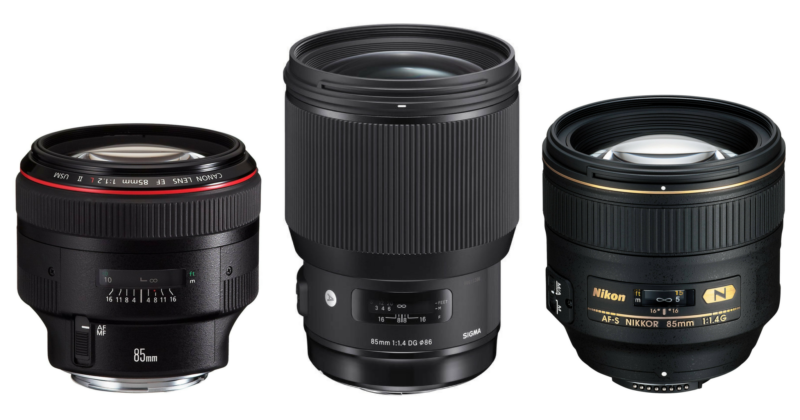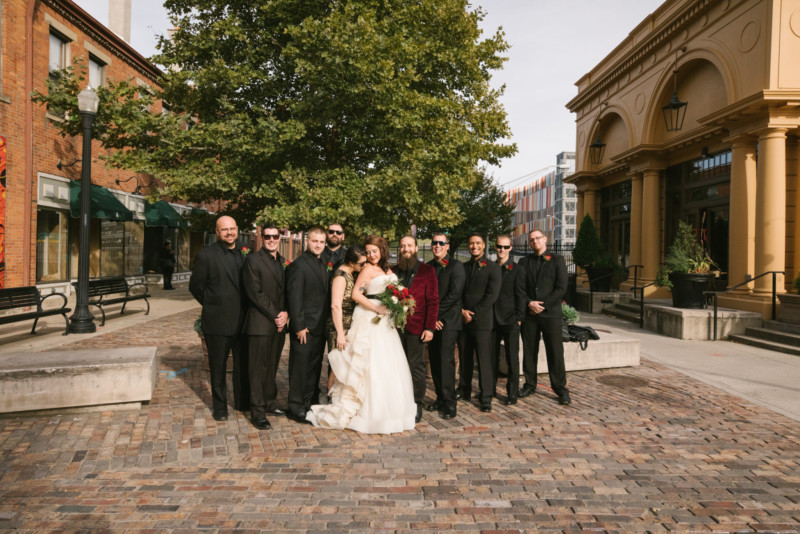Can Sigma’s 85mm and 12-24mm Art Lenses Replace the CaNikon Favorites?
![]()
Recent announcements from Sigma have made a lot of portrait and landscape photographers very happy. The question is, can the Sigma 85mm f/1.4 DG HSM Art and the Sigma 12-24mm f/4 DG HSM Art replace the current favorites from Canon and Nikon?
The Sigma Art series prime lenses are steadily taking over the entire range of focal lengths. With the recent announcements, Art primes now cover from 20mm to 85mm and Sigma even announced a 500mm f/4 Sport lens. You can now shoot exclusively Sigma Art lenses and be covered in nearly every situation.
The focal length that was conspicuously missing from the Sigma Art lineup has been a fast 85mm lens. After years of anticipation, the Sigma 85mm f/1.4 DG HSM Art finally brings a fast portrait prime to the market with the style and finesse of the Art line of lenses. Landscape and architecture shooters aren’t left out of the excitement, though. Also announced, the Sigma 12-24mm f/4 DG HSM Art lens is a low distortion, ultra-wide zoom lens that is going up against some of the most well-respected ultra-wides on the market.
![]()
All Global Vision lenses are produced in Aizu, Japan with a tremendous amount of quality control and care, and Sigma says that their best technology has made it into both of these lenses. From coatings to lens mount, the 85mm Art and the 12-24mm Art sport all the bells and whistles that you would expect from high-end glass.
The 85mm and the 12-24mm both utilize Sigma’s brass bayonet mount, which ensures a tight and durable splash-proof seal with the camera, and Sigma’s TSC or Thermally Stable Composite material, which enables more precision in the production of parts, while making the lens more resistant temperature variation or production defects. Smart photographers tend to buy durable gear, and Sigma built these lenses to last.
![]()

As far as the glass, it is all about image quality. Both lenses use round aperture blades for pleasing out of focus areas and a Super Multi-Layer Coating that helps reduce flare and ghosting. This super coating helps to maintain contrast and detail in your image, even when shooting directly into a bright light source.
Sigma also uses SLD (Super Low Dispersion) glass in these lenses to bring chromatic aberration to an absolute minimum, and maintain the utmost image quality. No corners cut in the optical department.
The Portrait Prime
![]()
While I didn’t do an exhaustive, scientific test on either of these lenses, I did get a feel for how they handle in a real world situation. These are my impressions based on first time use, so there is some room for my subjective opinion.
Pros: Price and AF speed
Cons: Size and Weight
Price
The Sigma 85mm f/1.4 DG HSM Art brings the Art Series Primes back into the spotlight. Releasing exciting lenses at a reasonable price is a good way to convince shooters to adopt a new lens, especially a lens not made by their favorite camera manufacturer.
The 85mm Art, in my opinion, is a lot of lens for the money… and at $1,299 the Sigma 85mm f/1.4 DG HSM Art sits well below the price point of the Canon 85mm f/1.2L and the Nikon 85mm f/1.4G lenses. That makes Sigma very smart for selling high-end glass at mid-range prices, especially when this lens could easily cost hundreds more and still be realistic.
Autofocus Speed
The best way for the Sigma 85mm 1.4 DG HSM Art to win loyal shooters is to beat the competition in the autofocus speed and accuracy department. Fast-aperture 85mm lenses tend to lag on the AF speed, mostly because of their big, heavy lens elements that have to be moved back and forth during autofocus. Those heavy lens elements weigh down the average autofocus motor struggling to move quick enough for today’s demanding photographers. To achieve faster AF on their newest lenses, Sigma redesigned their HSM (hyper sonic motor) to give the autofocus 30% more torque, with a new algorithm for accuracy.
The 85mm Art’s AF was not infallible, but surely fast enough to never cause any issues in a portrait session. I shot this lens in dimly lit areas without any issue on the Canon 5D Mark IV. It may have helped being that I used a new camera with an updated AF system, but the motor is what I was paying attention to.
The front lens element diameter is very large 86mm, so you notice it moving when you focus, but it doesn’t search and the motor is smooth and silent. Great AF is what will separate this lens from the pack, and in my experience, the AF was snappy and accurate even when shooting in very low light. I noticed a definite speed increase with the Sigma 85mm Art compared to my experience with the Canon 85mm f/1.2L, which is not known for its AF competence.

BONUS: Great Manual Focus
In the digital era, sometimes the usability of the manual focus feature of a lens can be easily overlooked. Not everyone with a DSLR uses manual focus on a regular basis, but a lens with a nice manual focus ring really helps when shooting in low light or when you want more control over where the lens is focusing.
Sigma smartly made use of the 85mm Art’s relatively long barrel by putting a wide, textured focus ring that is a pleasure to use. This lens also features full-time manual focus override, which allows you to manually adjust your focus while still in AF mode.
![]()
Size and Weight
When you first get your hands on this lens you notice one thing right away: it is big and heavy. Fast-aperture portrait lenses tend to get bigger and heavier than slower 50mm primes, but the new Sigma 85mm Art is large even compared to the Canon and Nikon fast 85’s.
Some people are interested in size and portability, and if that is you, this is not your lens. This lens is meant to be a workhorse. Some shooters will not be able to handle the size and weight of this lens, while others will revel in the design and feel of such a solid piece of craftsmanship.
I used the Sigma 85mm f/1.4 DG HSM Art on the new Canon 5D Mark IV, which is not a small camera, and I found it to be balanced nicely. That being said, this lens handles quite nicely on a full frame camera, and the balance point is perfect when you handle it correctly. The wide, smooth focus ring is a pleasure to use, especially with the full-time manual focus override.
This lens is professional grade for those looking for smooth, nimble control over the focus of your lens. The Sigma 85mm f/1.4 DG HSM Art lens represents just about the best build quality that you can get in this price range.

Any photographer that does not want people to notice that they are a photographer, may want to go with a different lens. This lens screams, “I’m a PRO!”, so if that is not what you are after, this lens is probably not for you. Now, if you want a lens that looks like something a high-end pro might bring on-set, then look no further than this beauty.
Like I said earlier, this is a high-end lens that looks the part. This lens will be perfect for those that want to make an impression with their gear. While some shooters are looking for smaller and lighter equipment, some still want gear that looks the part. By looking the part I mean that the gear looks expensive. Some clients want to be impressed by the gear brought on to set, probably because they feel like they got their money’s worth.
Ultimately, the images will have to speak for themselves, although looking the part is an important part of being a professional.
![]()

The Ultra Wide Zoom
Pro: Price
Con: Weight, maybe…
![]()
Price and Size
The ultra-wide zoom is another lens category that is hotly contested by the other lens manufacturers. The three main contenders are the Canon EF 11-24mm f/4L USM lens, the Nikon AF-S NIKKOR 14-24mm f/2.8G ED lens, and the Tamron SP 15-30 f/2.8 Di VC USD lens. All of these lenses are constant aperture ultra-wide zoom lenses with low distortion and great image quality, although, there are some differences.
First, the prices of the lenses ranges quite a bit, from around $2,999 for the Canon, and around $1,199 for the Tamron. The Sigma 12-24mm f/4 DG HSM Art lens is going to sit right in the middle of the price range, making it very attractive to photographers looking to save money, without making any compromises on image quality. Very minimal distortion and vignetting, a constant f/4 aperture, and a good value at $1,599. If that doesn’t sound like a value price, just remember that the Canon 11-24mm f/4L is at a price point $2,999, and the Nikon 14-24 f/2.8G comes in at about $1,897.

This is a landscape, cityscape, and architecture photographers dream lens, and anyone in the market for a ultra-wide zoom will definitely want to take a serious look at this lens.
It does not seem to suffer from any of the typical problems associated with ultra-wide zooms. The first thing that you’ll notice is the lack of distortion in the eyepiece, even when zoomed all the way out to 12mm. Extra large aspherical lenses, combined with low and super low dispersion glass, keep distortion, spherical aberration, and coma flare at a minimum. Photographers will have to put this lens through its paces in the field, but I have no reason to think that the Sigma 12-24mm f/4 Art will not rise to the occasion.
One note to keep in mind is that this lens does not accept screw-on filters. This huge front end requires using a special filter holder if you want to use a polarizer or ND filter, which is essentially a must if you are a landscape or architectural photographer. I didn’t count this as a major drawback since most lenses of this type have a similar bulbous front element.
While not usually available right at release time, drop-in filter solutions will be available soon from Lee Filters and Wonderpana from Fotodiox.


Bottom Line
If you are in the market for a high-end fast portrait lens, the Sigma 85mm f/1.4 DG HSM Art will not let you down and will save you some money over some other fast 85mm’s on the market. If great bokeh and snappy autofocus is on the “must-have” list for your next portrait lens, then this lens will not let you down. That is, if you don’t mind carrying a 2.5 pound lens around all day. Overall, the image quality and sweet price point makes this lens a smart buy.
The Sigma 12-24mm f/4 DG HSM Art is aiming right at the perennial favorites in Canon and Nikon ultra-wide zoom category, with all the features for less money. In the short time I spent using this lens, I couldn’t really find a solid downside to it, considering the type of lens that it is. Sure, it is a little heavy, but all lenses of this type are, and anyone serious about landscape or architecture will be prepared for the weight. I think any shooter looking to take their landscape and architecture photography to the next level will want to take a good look at this lens.
If size is the only complaint that I can come up with for these lenses, they are doing pretty well. The Global Vision lenses from Sigma have created increased competition among lens manufacturers, giving photographers more choice than ever. Sigma has shown that lenses don’t have to have a Canon or Nikon name on them to be highly anticipated and respected. More competition means better and better gear for better prices, and that is exactly what is happening with these lenses.
Check out this 5 minute video about the way that Sigma produces their lenses. Against the serene backdrop of the countryside of Aizu, Japan, this meditative video shows why attention to detail and emphasis on craftsmanship makes such a difference in the production of Sigma’s Global Vision Lenses.
About the author: TJ Hansen is a freelance photographer from Columbus, Ohio that works at Midwest Photo. You can see more of his work on the MPEX Experience blog. This article was also published here.